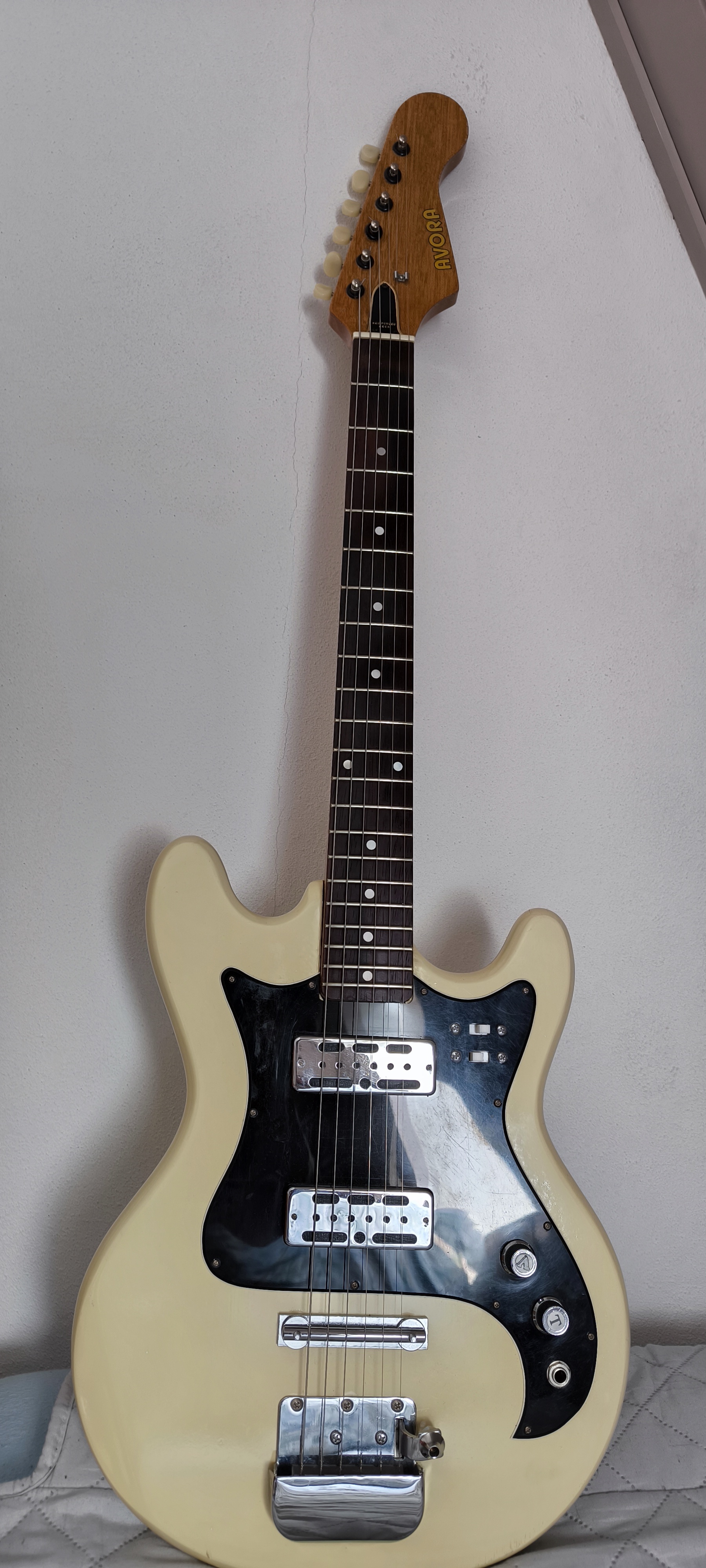I don’t mean BETTER. That’s a different conversation. I mean cooler.
An old CRT display was literally a small scale particle accelerator, firing angry electron beams at light speed towards the viewers, bent by an electromagnet that alternates at an ultra high frequency, stopped by a rounded rectangle of glowing phosphors.
If a CRT goes bad it can actually make people sick.
That’s just. Conceptually a lot COOLER than a modern LED panel, which really is just a bajillion very tiny lightbulbs.
The Apple II is still such a fucking cool computer.
Sure, my watch is about a billion times more powerful, but my watch will never be as cool as the Apple II.
It’s mainly cool to me because of what it represented in its era. It was personal computing available for the masses, yes, but it’s also the embodiment of the American dream. Here’s these guys soldering and writing code in their garage, and all of the sudden they’re in stores across the world, and competing with giants such as Xerox, and IBM. It’s a product from a story for the ages.
Never did I wish I’d been born 30 years earlier quite how when I saw 8 bit guy’s video on the workings of an Apple II
I simply adore how tinkerable that thing seems to be.
I dunno about you, but I have a hankering for the mid-to-late-80s aesthetic, but specifically that taken into sci-fi. I’m talking Cowboy Bebop, Outlaw Star etc. 80s tech but… Future!
Everything’s so chunky and functional. It looks like you could hit it with a sledgehammer and it would still work!
Basically, BUTTONS! Gimme buttons, lots of big buttons! I want things that go click so I can be sure I’ve pressed them. I don’t want a tiddly little touchpanel for my washing machine, I want a button that goes CLACK when I press it!
Pneumatic tubes were way, way cooler than email.
Of course, you could only use them to send a message to someone in the same office building, so the comparison isn’t perfect… but you know what I mean.
Some downtown big cities had the buildings interconnected.
Roosevelt Island in New York City uses pneumatic tubes for trash collection!
Ironically, it actually sucks less than the famously terrible way the rest of the city does it.
Cool. Thanks for the link!
Prague had a large pneumatic post system which operated for 100+ years.
I had no idea there were systems that spanned entire cities! Thanks for the link!
Big hospitals still have them to send medications and random lightweight stuff around the complex. My wife has worked in two large hospitals that had pretty extensive tube systems, used especially with pharmacy.
My Walmart has them for a pharmacy drive thru.
Tom Scott does a youtube video about one in Canada (IIRC) where they send radioactive medicine from the lab a down the road to a hospital due to the half life of the medication making traditional transport (ie vehicles) impractical.
Edit: bothered to look it up
deleted by creator
The two major hospitals, relatively near me, use a combination of tubes, and robots, to dispense medications. One is working on completely robotic food service, and has completely robotic floor cleaning/polishing. Both, also, have robots that do the basic landscaping maintenance, like mowing/edging. There is more, it is interesting to walk around and see all these infrastructure systems work. Feels, at least partially, like the promised future of sci-fi.
Before ATMs, bank drive-throughs (the ones with multiple lanes for cars) had pneumatic tubes to send cash and checks to the bank teller, or receive cash.
Some probably still do. I feel like I used one within the past 10 years.
I remember those! I wouldn’t be surprised if they’re still in use. I’ve never used the drive-through lane at my bank. I can deposit checks online by taking a picture of it (which still seems weird to me), and I use the ATM for everything else.
They’re still in use at most banks where I live. Most hospitals use them too; way faster than dumbwaiters
I’m not crazy old, but I’m old enough that the supermarket I went to as a kid had these at all the checkout aisles and the cashiers would use them to send cheques/reciepts/ whatever.
It was awesome to see.
Okay, maybe my town is just not up to date, but these are still in use at all the banks and pharmacies where I live. Are they phased elsewhere?
They are used in some hospitals in central Europe
I haven’t seen one in years, but the fact that they’re all used is awesome.
The Kroger pharmacy here replaced their awesome pneumatic tube with a boring sliding drawer.
They still use them today in some supermarkets, now they use them to send packets of cigarettes through the store.
That’s actually a pretty good use. In my local market they send the person to a separate counter.
Very cool, I’ve never seen the ones that can send a person. Can they breathe in transit?
It’s pneumatic, not vacuum. Geez.
Making it dangerous to smoke while in transit. I see why the people ones didn’t catch on in the 50s.
Hate someone in the office? Pour hot coffee into the container and send it to your victim.
The factory i work at occasionally still uses them for delivering tests to the lab, pretty cool to hear them swish around in the pipes.
Also, waving a magnet around a crt was fun.
Yes!
Also, the static on the screen. I don’t mean snow, but the actual static that raised your arm hairs. Whenever my parents needed to leave a note for us, they’d just stick the paper to the TV screen and it would stay there because of the static.
Great way to not have a crt anymore.
Nah, that didn’t harm it.
Not in my experience. You use a degaussing tool (which is an electromagnet) on crts when the picture gets all “wonky” (technical term).
Interchangeable automotive/bicycle parts.
Or for that matter, interchangeable anything parts.
Both cooler and better at the same time. Interchangeable parts made it easier to both customize and repair your own stuff…
I love that Replaceable Parts is a technology you can research in Civilization. The first time I saw it I thought it was kinda stupid until I thought “Oh wait, does that mean that there was a time when replacement parts just wasn’t a thing?”
The concept of having interchangeable, standardized parts is actually kind of a new idea from the Industrial Revolution. Before then, everything was custom-made to fit. The example that comes to mind is firearms. All of the muskets and rifles used in the revolutionary war, for example, were hand-made and hand-fitted. The lock from one rifle wouldn’t necessarily fit on another. If your stock broke, you couldn’t just go get a new stock and slap it on - you had to bust out the woodworking tools and make a new one.
Used to be where Mongoose, Huffy, Schwinn, etc bearings and stuff were interchangeable. Used to be where NVidia GPUs could run in an AMD motherboard. I happen to own older things on both ends of that compatible spectrum.
Used to be where an Idle Air Control Valve from a Chevy would fit an Isuzu…
Used to be where NVidia GPUs could run in an AMD motherboard. I happen to own older things on both ends of that compatible spectrum.
I don’t know what you mean by that. The protocol for communication of computer parts is open source. Desktop computers are a great example of interchangeable parts. An Nvidia GPU that can’t run in an AMD motherboard is either not from the same era (so an equivalent AMD GPU wouldn’t work either) or a different form factor (e.g. trying to plug a laptop GPU on a Desktop)
The protocol of communication of computer parts is open source? Since when?
What the fuck is USB? And why is that proprietary?
Regardless, AMD vs nVidia might work together, but not optimally these days.
The protocol of communication of computer parts is open source? Since when?
Since forever, which protocol do you think it’s not? For a few examples here’s PCI and DDR5
What the fuck is USB? And why is that proprietary?
USB is a standardized connector, with again an open source protocol. Here’s the specification in case you’re interested https://www.usb.org/document-library/usb-20-specification
Regardless, AMD vs nVidia might work together, but not optimally these days.
I would need a source for that, I’ve had AMD +Nvidia up until very recently and it worked as expected.
USB is absolutely not a standardized connector, otherwise it would only be one type of connector, not the dozen or so they’ve made over the decades. There’s nothing universal about it.
And if it was open source, then why doesn’t VirtualBox release the source code for their USB extension package?
USB is absolutely not a standardized connector,
USB is absolutely standardized, I even sent you the 2.0 spec, you can get the spec for the other versions on the same website.
otherwise it would only be one type of connector, not the dozen or so they’ve made over the decades.
Different versions/connectors have different specs, all of them open, otherwise different manufacturers wouldn’t be able to create devices that use it.
There’s nothing universal about it.
That’s ridiculous, first of all the name relates to the fact that it can be used for any data transfer as long as it’s serial. Secondly the sheer amount of different devices from different manufacturers that can be plugged via USB should give you a hint of just how universal and open the standard is.
And if it was open source, then why doesn’t VirtualBox release the source code for their USB extension package?
The standard is open, implementations of it are not, it’s like OpenGL or Vulkan.
Regardless, AMD vs nVidia might work together, but not optimally these days.
And yet most of the time in the past 2 year the best choice for a gaming PC would be a 3D cache Ryzen with an Nvidia GPU. Is there something particular you have in mind that supposedly doesn’t work with an AMD chipset and an Nvidia GPU?
PCI-Express is not an open standard but both AMD and Nvidia are members and it’s what both use for their GPUs and AMD for it’s chipsets (as well as Intel). It’s certainly not a secret cabal.
It’s all in the same family, literally…
https://www.cnn.com/2023/11/05/tech/nvidia-amd-ceos-taiwan-intl-hnk/index.html
This supports your claim of AMD vs Nvidia not working optimally together how?
Used to be where NVidia GPUs could run in an AMD motherboard.
They still can.
Oof, wait. I mean when AMD processors were actually compatible with nVidia motherboards.
A8N-SLI Deluxe
But that’s not a thing for intel CPUs either, at least not anymore.
I’m not sure why, but Nvidia hasn’t been making chipsets/motherboard sfor quite a while. Or was there a point in time when it only made chipsets for intel CPUs?
Probably not as well as used to be though.
No, they work fine.
Try an nVidia nForce4
Being able to build something with off the shelf parts is an art.
Older forms of computer RAM.
Before integrated circuits, we had core memory which was a grid of wires and at each intersection was a little magnetic donut that held a single 1 or 0.
https://en.wikipedia.org/wiki/Magnetic-core_memory
Before that they had delay line memory, where they used vibrations traveling down a long tube of mercury, and more bits meant a longer tube to store a longer wave train.
They use to have weaving grannies for the magnetic core memory production.
Even though the story involves drum memory instead, your mention of delay-lines reminds me of The Story of Mel, a Real Programmer. Y’all should read the whole thing (it’s not long), but here’s a quick excerpt:
Mel's job was to re-write the blackjack program for the RPC-4000. (Port? What does that mean?) The new computer had a one-plus-one addressing scheme, in which each machine instruction, in addition to the operation code and the address of the needed operand, had a second address that indicated where, on the revolving drum, the next instruction was located. In modern parlance, every single instruction was followed by a GO TO! Put *that* in Pascal's pipe and smoke it. Mel loved the RPC-4000 because he could optimize his code: that is, locate instructions on the drum so that just as one finished its job, the next would be just arriving at the "read head" and available for immediate execution. There was a program to do that job, an "optimizing assembler", but Mel refused to use it.
Any mechanical regulation process that used to be handled by actual machine parts. Think of the centrifugal governor, this beautiful and elegant mechanical device just for regulating the speed of a steam engine. Sure, a computer chip could do it a lot better today, and we’re not even building steam engines quite like those anymore. But still, mechanically controlled things are just genuinely a lot cooler.
Or hell, even for computing, take a look at the elaborate mechanical computers that were used to calculate firing solutions on old battleships. Again, silicon computers perform objectively better in nearly every way, but there’s something objectively cool about solving an set of equations on an elaborate arrangement of clockwork.
Someone showed me a record turntable with what must have been a centrifugal governor! What an ingenious device. (I got the impression from him this was unusual for a turntable, at least…)
I was under the impression that all wind-up turntables (I.e.: from the shellac records and steel needles and mechanical reproducers era) were using mechanical governors
Maybe I’m wrong though.
Oh I know little to nothing about turntables, so you’re probably right :-)
H model C-130s, the ones with the 4 square blade props? The engines and props are mechanically governed. There are electronic corrections applied, but the core of the systems are purely mechanical. Still flying.
Source: former flight engineer on them.
To add, there is something about those old 40s and 50s era technical films like you linked that is just so… I don’t what exactly it is, but I find them fascinating and genuinely informative, even though they are explaining tech that is decades obsolete.
It’s pretty awesome that they are still available 70+ years later in excellent quality!
Centrifugal governors are possibly one of the origins of the phrase “balls out” or “balls to the wall” (although many say “balls to the wall” has to do with the ball-shaped handles on old aircraft throttle levers)
Also somewhat similar to governors are centrifugal switches, which are used in just about anything with an electric motor to disconnect the motor from a capacitor which gives the motor a little extra juice to get it going (I like this video for an explanation of how they work)
I didn’t know that was a thing. Thanks! I’m honestly surprised some MBA bean counter hasn’t replaced those with a chip of some sort by now. Really cool!
The idea of punch card programming blows my mind.
He’s not talking about punch card programming, that’s way more advanced and requires a Turing machine, what he’s talking about is computers as the term was using before what you would think as a computer existed.
The example in the video is for the computer on a cannon in a battleship. If there wasn’t a computer you would need to adjust the angle and height of the cannon, but that’s not something a human can know, what humans can know is angle to the ship and the distance to it, so instead you put two inputs where a human inputs that and you translate that into angle/height. Now those two would be very straightforward, essentially you just rename the height crank to distance. But this computer is a lot more complex, because wind, speed, etc can affect the shoot, so you have cranks for all of that, and internally they combine into a final output of angle/height to the cannon.
That’s cool, but punch card programming blows my mind.
Railway signalling and interlocking systems. Sure ETCS and other digital systems are far safer, but some dude at a junction used to manually reset the points and crossovers using a giant lever. Now everything’s just a digital system overseen by someone with 8+ monitors in a control room removed from the actual network.
Also, not a technology, but rally cars used to be fully unhinged. I could watch old Group B videos for hours and never get bored.
Come to Germany, we still use parts from emperors time😂
I’m a sucker for Nixie Tubes
I have a broken Nixie clock, at home, it looked great when it was working
A lot of older tech had a way more interesting silhouette. You can see this clearly in how many objects live on in icon form. We still often use handset phones, magnifying glasses, gears, or the infamous floppy disk save icon. I think the staying power of these really comes from how ephemeral and formless digital tech can be.
Reminds me of the device icons in Microsoft Intune.
Android is represented by a rounded rectangle. Linux is a rounded rectangle, but yellow. iOS is, you guessed it, a rounded rectangle, but black.
Windows, however, is a nice flat-screen monitor (read: a rounded rectangle on a stick)
I still think ZIP drives are pretty cool. Or using cassette tapes of any kind for data other than video/audio. Hella wish I had a DAT drive still.
Zip drives still hold the most data of any media. Science may say otherwise, but science doesn’t usually come in bright neon colored sleeves.
Electric guitars. They sounded better. Newer ones just sound louder.
They also feel…worse? Jumbo frets, thick coats of polyurethane, cheap pickguards, plastic pickup covers, etc — yuck.
I’ve been buying weirdo vintage guitars (
 teisco, musima) and they feel way better in my hands. The pickups are usually pretty low output, yeah, but the cleans sound so so good.
teisco, musima) and they feel way better in my hands. The pickups are usually pretty low output, yeah, but the cleans sound so so good.Looks awesome! I’m guessing the body is about 1" thick?
Well that one is a baritone (26.5" or 27" scale) but still pretty thin (about as thick as the typical strat) and ergonomic.
My other guitar, a 1960s teisco, is one of the lightest guitars I’ve ever owned:

I’m gonna modify this one though and put a tuneomatic on here, the intonation is quite terrible.
That bridge looks like it’s just a flat metal bar, yeah that’s gonna cause problems.
Carburetors are pretty fuckin cool.
The concept seems simple: utilize the vacuum from the engine to pull in fuel. But they’re extremely complicated with all the tiny orifices and passageways to perfect the amount of fuel going into the engine at different points.Unrelated sidenote: i got deja vu writing this comment. Interesting.
A fuel injector is measurably better in basically every way.
I might still rather have a carburetor…
Car washes. All those pretty lights and water effects are now replaced with an instant transition.
Automatic watches and grandfather clocks. The way they kept track of time using only mechanical principles is crazy. How does my automatic watch recharge itself using only the movement from wearing it and keep accurate track of time. Grandfather clocks are cool because they’re so power efficient.
deleted by creator
They are very cool indeed. And the fact that you can have a century old watch on your wrist and it’s just as useful as a modern one. In fact I’m wearing a watch from the 50s right now!

















